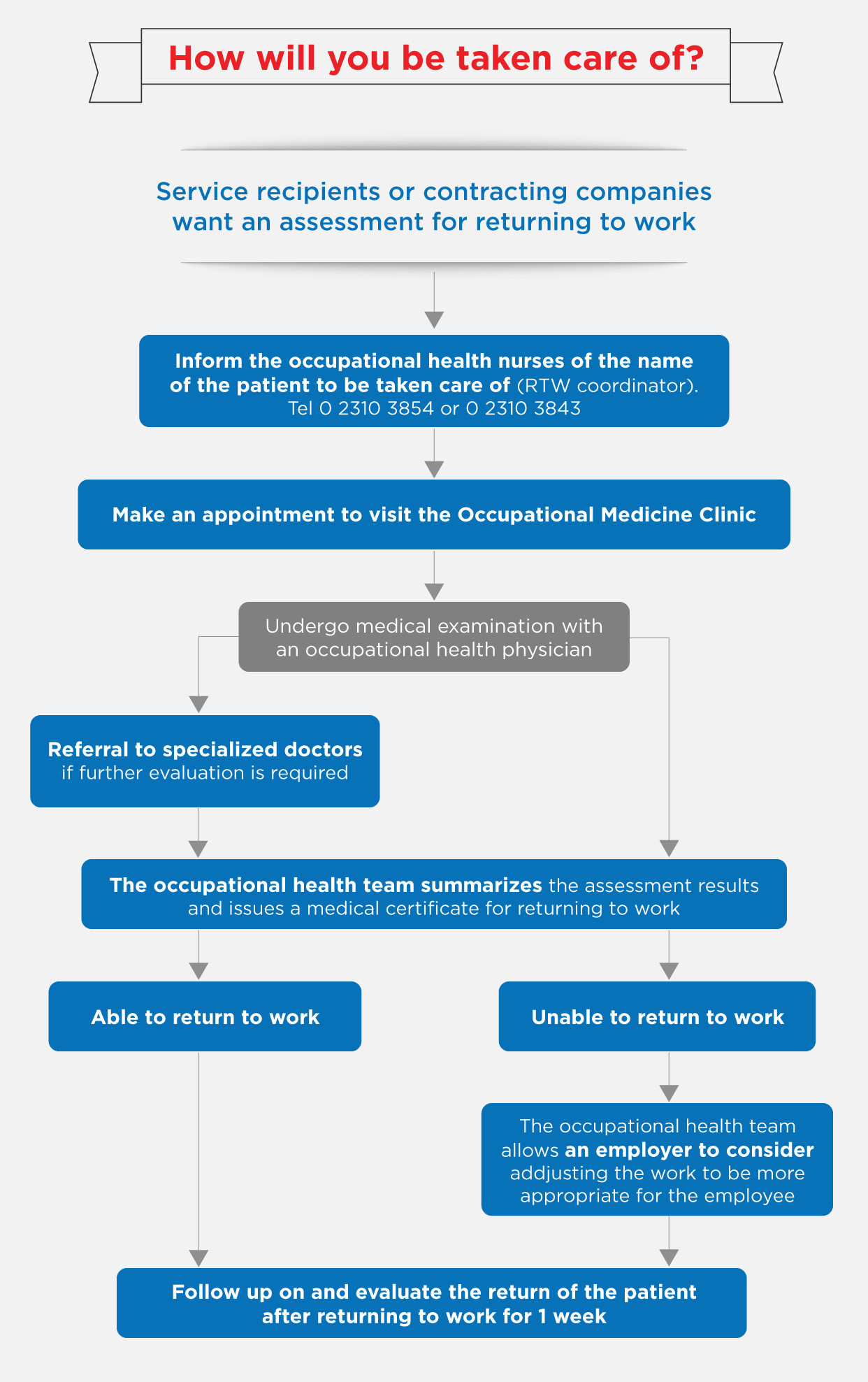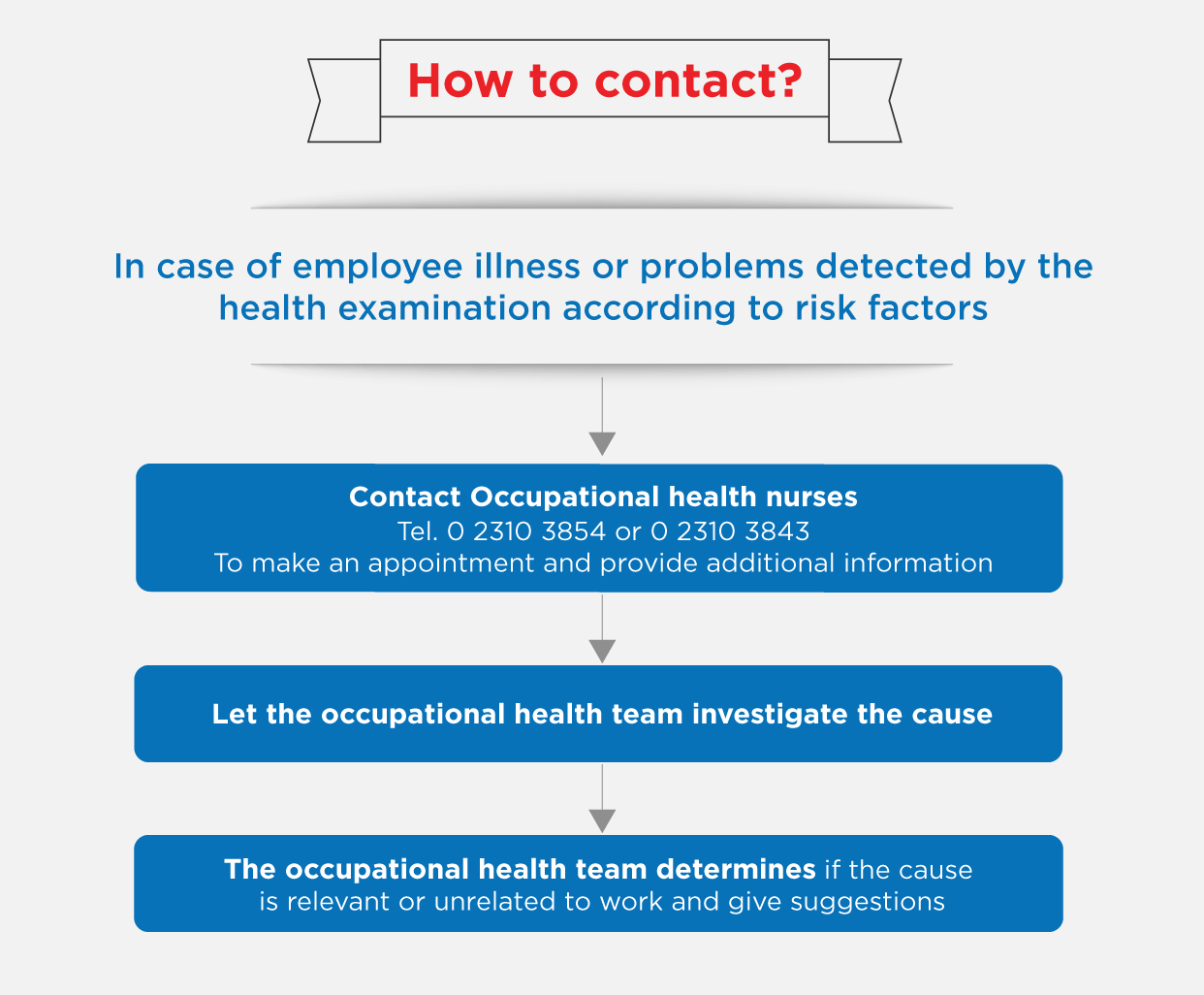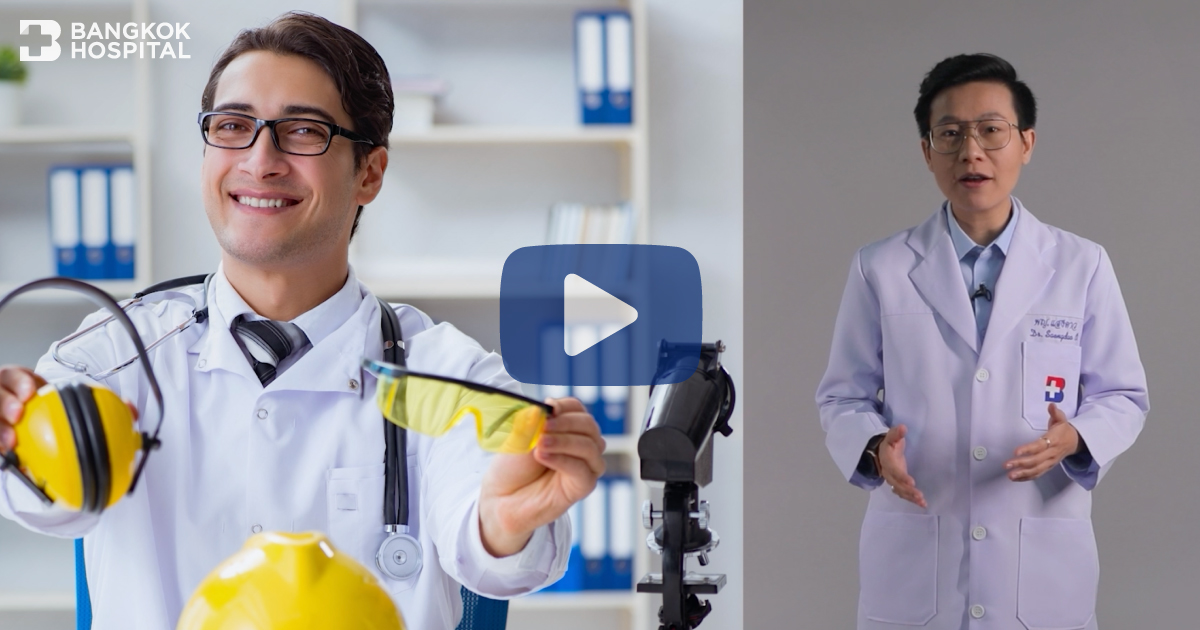1. What kinds of measurements?
- Preemployment health examinations
The health examination is intended to assess the initial readiness of the job applicant - A health check-up conducted before the employee enters the position or changes his or her job (preplacement health examination) is a health check-up to assess the employee’s readiness to fill a job position and job description Examples of health examinations to assess work readiness
- Health examination to assess readiness for work in confined spaces (Confined space)
- Health examination to assess readiness for offshore work (Offshore)
- Health examination to assess readiness for work as a seafarer (Seafarer)
- Health examination to assess readiness for work as a professional driver (Professional driver)
- Health examination to assess readiness for work at heights (Work at height)
- Health examination to assess readiness to be a firefighter (Fire fighter)
- A health examination following a periodic schedule (Periodic health examination)
is a health check-up intended to monitor health based on occupational health risk factors. According to an announcement of the Ministry of Labor on determining criteria and methods for employee health examinations and sending the results of examinations to labor inspectors, B.E. 2547, “The employer has to arrange for a health examination of employees working with risk factors conducted by a first-class medical practitioner who has been licensed to practice medicine in occupational medicine, or who has been trained in occupational medicine, or who has the qualifications as specified by the Director-General. The first health examination is to be completed within 30 days from the date of accepting the employee to work. The health examination needs to be provided at least 1 time each year“If there is a change of position, or if the risk factors for occupational health for a particular job description change, a health examination is needed. - Retirement health examination
is a health check-up to determine the health condition of an employee who is leaving his or her job. The result will be useful for the workplace, as information about work-related illness can be collected.
2. Taking care of employees when they return to work (Return-to-Work Management)
What is Return-to-Work Management?
This is intended to take care of employees who are returning to work after an absence. It provides for the management, planning, and evaluation of employees before they return to work. It is part of the process of caring for employees after an illness or injury that caused them to stop work. By collaborating with the employer to manage and assist in adapting the work environment and job description appropriate to them, the company helps employees return to work safely. An assessment of the readiness of employees to return to work is also performed.

Benefits of conducting Return-to-Work Management
- Employees can return to work properly and safely.
- Reduce the rate of absence or relocate the work of the employee
- Increase productivity and efficiency after the return
- Help restore the mind or reduce stress after the employee returns to work
Who should conduct Return-to-Work Management
- Those who suffer from danger or severe illness, or those who have to stop working for 3 days or more
- Those who have undergone surgery or been hospitalized for 3 days or more
- People with other illnesses that may affect their ability to work and the safety of themselves and their colleagues
You will be taken care of by …
A multidisciplinary team with expertise in caring for patients returning to work after an absence, including occupational physicians and occupational health nurses who can provide services with efficiency and high standards. Other specialized doctors of various fields of expertise are also ready to provide service.
3. Work-related injury and illness investigation and prevention
Objectives
To take care of the employee’s health in compliance with ministerial regulations designating rules and procedures for conducting employee health examinations and sending the results to the labor inspector B.E. 2547 Article 9If any health abnormalities are detected in the employee or if the employee has symptoms or illness due to work, the employer should arrange for the employee to receive medical treatment immediately to determine the cause of the problem so that treatment can be arranged.

Benefits
- Find other employees who may be sick for the same reason so that timely treatments can be provided
- Prevent other employees from getting sick for the same reason.
- To help improve the working environment so that it is appropriate and safe
4. Health promotion program at the workplace :
4.1 Hearing conservation program
Objectives
To be used as a guideline for the prevention of sensorineural hearing loss due to working in proximity to loud noise in the workplace, according to the Department of Labor Protection and Welfare, re: Rules and Procedures for Establishing Hearing Conservation Measures in the Workplace B.E. 2561
Should proceed when …
Employees are working in an environment that has an average noise level over a period of 8 hours ranging from 85 dBA or higher (according to law) or 82 dBA or higher (according to international standards)
How does the Bangkok Hospital team help?
Bangkok Hospital helps establish hearing conservation measures according to the standards of the United States and in accordance with the laws of Thailand by
- Determining the policy on hearing conservation for establishments
- Noise Monitoring Creating a noise contour map Provides assessments for exposure to loud noise both in person and within the area
- Hearing Monitoring Hearing test conducted with international-standard equipment, assessing hearing performance according to law and helping establishments prevent danger to employees from loud noise
- Organizing training to educate employees about hearing conservation measures, the importance of hearing performance testing, the danger of loud noise, control, and the use of personal safety protection equipment
- Helping evaluate and review the management of hearing conservation measures in the workplace
Provided by
- Occupational physicians
- Occupational health nurses
- Industrial hygienists
4.2 Office ergonomic assessment to prevent work-related musculoskeletal disorders-Bangkok Office-Ergo Program
is a scientific study of the relationship between employees and the work environment in order to adjust the conditions of the work to suit the operator, making the operator work more efficiently and in better health
Objectives
To reduce the danger of injury to the musculoskeletal system due to work in the workplace
Benefits
- Reduce the danger of injury to the musculoskeletal system due to work
- Reduce medical expenses
- Reduce the absence of employees or their resignation
- Increase employee productivity and reduce the loss of work equipment
Evaluated and recommended by …
Multidisciplinary team ;Occupational physicians, occupational health nurses, industrial hygienists, Physical therapists
5. Health promotion program at the workplace
Why is there a health promotion program for employees?
Every organization has the goal of creating effective results. Human resources are valuable assets in creating work and generating income. However, taking care of employee welfare is considered a major expense. If the organization considers about “direct expenses” such as welfare benefits, insurance premiums and various medical, it may choose to reduce costs, believing they can do it. However, in fact they are “indirect costs” that are not visible such as absence of employee, substitute workers, overtime fees, new employee training or loss of efficiency when employee come to work with unprepared physical or mental ailments, various compensations, etc.
When considering both “direct expenses” and “indirect expenses” it has been determined that if an employer chooses a health promotion program for employees in order to prevent both physical and mental illness, which is a primary problem of the organization, employees will feel cared for and will work more efficiently. This will help the organization become a “healthy workplace” with high efficiently. This translates into a real cost reduction, well worth the investment in the organization’s human resources.
The process of developing a health promotion program for employees following the principles of Health and Productivity Management (HPM) of the American College of Occupational and Environmental Medicine (ACOEM)
Step 1 Evaluate the organization
Step 2 Examine the data and various indicators of the organization
Step 3 Plan procedures
Step 4 Conduct health promotion program activities
Step 5 Evaluate and improve operations
Benefits of organizing a health promotion program for employees
- Employees have better physical and mental health
- Employees become highly engaged with the organization
- Employees work with greater efficiency
- Total expenses for staff care decrease
Provided by
- Occupational physicians
- Occupational health nurses
- Related experts
6. First aid & Emergency preparedness
An emergency in the workplace is a threat to employees, customers, and society at large. It interrupts or destroys the operation, causing physical or environmental damage. The emergency may be caused by human error or by natural disasters such as floods, chemicals, spills, epidemics, or the spread of biological chemicals, radioactive substances, or other dangerous elements.
Employees may need to deal with emergencies. Proper planning before an incident arises is essential to responding effectively to it. The best way to protect workers is to anticipate unexpected situations in order to efficiently plan for emergencies. Planning in advance helps everyone know what to do when the incident occurs.
Benefits
Prepare and respond to emergencies affecting occupational health and safety.
Comply with the plan following the occupational health and safety standards of each industry
Service
1. First aid
Conduct a walk-through survey and give advice on first aid systems to the enterprise.
Provide first aid training to cover basic life support and the use of AED with the company’s employees
Provide advice on the establishment of a nurse’s office in the standard workplace, including establishing standards for the collection of health data
2. Organize a regular first aid box as required by law and necessity (first aid box)
3. Emergency response planning
- Participate in the planning of emergency operations, including assessing the threat of potential chemical, physical, and biological impacts on operations, machinery, and equipment; provide names and contact numbers of those responsible for addressing emergencies; coordinate with external organizations for assistance in emergencies; plan to prepare solutions for the organization
- Establish emergency training guidelines, assign responsibilities, and practice for emergencies
- Evaluate the effectiveness of emergency plans
- Focus on health surveillance and assess readiness before returning to work after an emergency
- Measure the work environment after an emergency
Provided by
Occupational physicians, occupational emergency physicians, occupational health nurses, industrial hygienists
7. Be a consultant for occupational health establishments (occupational health consultation)
- Provide counsel and prevent threats to employee health, and prevent occupational diseases (occupational disease)
- Give advice on staff health care about preventing work-related illness such as muscular dystrophy, work stress, cardiovascular and cerebrovascular disease, etc.
- General health care consultation in the workplace










